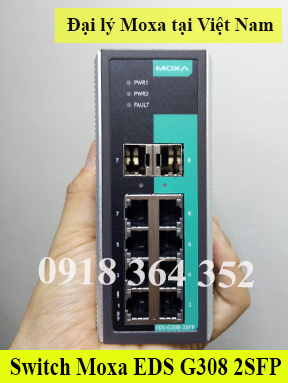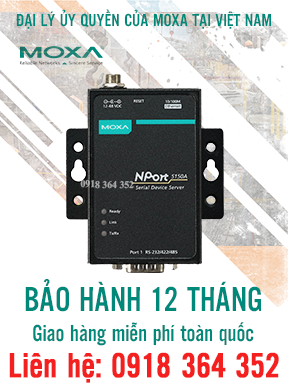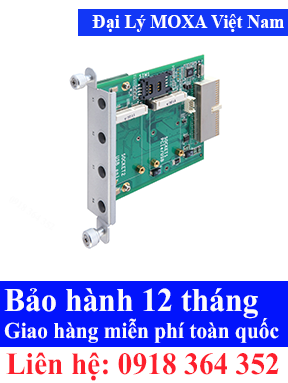- Trang chủ
-
Danh mục
- Phần mềm quản lý sản xuất - Industry Software
- Thiết bị an toàn và phòng cháy chữa cháy
- Nhiệt kế hồng ngoại & thiết bị phát hiện khí
- Đo lực và Mô-men xoắn
-
Thiết bị kiểm tra chất lượng chai thủy tinh
- Kiểm tra thân chai thủy tinh
- Kiểm tra vai chai thủy tinh
- Kiểm tra bên trong chai thủy tinh
- Kiểm tra màu sắc chai thủy tinh
- Kiểm tra cổ chai thủy tinh
- Kiểm tra miệng chai thủy tinh
- Hệ thống lựa chọn chai thủy tinh tự động
- Hệ thống kiểm tra mẫu chai thủy tinh
- Đếm và kiểm tra chai thủy tinh nóng bị tắc
- Kiểm tra mức chất lỏng và vị trí nắp chai
- Kiểm tra chất lượng và nguồn gốc mã sản phẩm
- Hệ thống kiểm tra đáy chai thủy tinh
-
Hệ thống kiểm tra thép trong quá trình cán nóng
- Cảm biến kiểm tra thép
- Thiết bị chụp ảnh quá trình cán nóng thép
- Thiết bị kiểm soát chất lượng và quy trình trong nhà máy thép
- Hệ thống đếm sản phẩm trên dây chuyền cán thép
- Đo độ dài thép
- Hệ thống nhận diện đầu cuộn thép
- Đo kích thước thép nóng chạy liên tục
- Hệ thống kiểm tra bề mặt thép đã gia công
- Máy đo chiều dài thép tấm
- Thiết bị kiểm tra chất lượng mối hàn
- Thiết bị nguồn điện
- Đèn còi chống cháy nổ
- Thiết bị đo độ ẩm nhiệt độ
- Thiết bị xả tĩnh điện
- Mô-đun kỹ thuật số ASi
- Phần mềm quản lý hệ thống
- Phụ kiện
- Nguồn điện công nghiệp
- Thiết bị dò khí
-
Thiết bị truyền thông
- Thu phát sóng không dây
- Switch Công nghiệp
- Chuyển đổi giao thức-Gateway/Routers
- Thiết bị giám sát cảm biến từ xa
- Bộ chuyển đổi giao thức
- Card mở rộng tín hiệu
- Thiết bị mở rộng IO
- VPN Router Công nghiệp - Thiết bị kết nối từ xa
- Thiết bị giao tiếp máy tính - I/O
- Bộ định tuyến - Router
- Bộ chuyển mạch - Switch
- Bộ chuyển đổi RS232/485/422 sang Ethernet
- Bộ chuyển đổi RS232/485/422 sang quang
- Bộ chuyển đổi quang điện
- Thu thập và điều khiển I/O (Smart IO)
- Card PCI chuyển đổi tín hiệu Serial (RS232/485/422)
- Thiết bị chuyển đổi RS232/485/422 sang USB
- Hệ Thống Liên Lạc Nội Bộ - Intercom
- Thiết Bị Điện Chống Cháy Nổ/Công Nghiệp
- Máy tính công nghiệp
- Thiết bị đo lực
- Biến tần Công Nghiệp
- Thiết bị đo Độ ẩm-Nhiệt độ-Dewpoint
- Thiết bị đo Lưu Lượng/Tốc độ/Áp suất không khí
- Thiết bị cho ngành sản xuất dây cáp
- Thiết bị đo lường công nghiệp
- Thiết bị lập trình PLC + HMI
- IP Camera - Video Server
- Sản phẩm
- Đối tác
- Giải pháp
- Liên hệ
- Tin tức
Chi tiết
Features and Benefits
- IEC 61850-3, IEEE 1613, and IEC 60255 compliant for power substation automation systems
- EN 50121-4 compliant for railway wayside applications
- 6th Gen Intel® Core™ i7/i5 CPU (Skylake)
- 2 built-in DDR4 memory sockets
- 1 mSATA for OS and 1 SATA III for storage expansion
- 14 Gigabit Ethernet ports for network redundancy
- 3 PCIe expansion slots for expansion modules
- Highly reliable design, supporting dual power and PRP/HSR technology (with PRP/HSR expansion module)
Introduction
The DA-720 Series computers are x86 platforms with 14 Gigabit Ethernet ports, 2 isolated RS-232/422/485 serial ports, USB, VGA, and 3 PCIe ports for expansion modules. The DA-720 comes in a standard 19-inch 2U rack-mountable case with a robust design ideal for specialized industrial automation applications, including power substations, transportation and shipping, and oil and gas production and supply.
With IEC-61850-3 and IEEE 1613 compliance, the DA-720 is sure to deliver stable and reliable system operation for power applications. The DA-720 also complies with the IEC 60255 standards, which cover the protection of electrical relays in a smart substation. IEC 60255 is one of the most widely used standards for testing relays and protection equipment, and compliance with the standard ensures that the DA-720 will work reliably and seamlessly with IEDs as part of a robust substation automation system.
EN 50121-4 compliance confirms that the DA-720 can deliver stable and reliable system operations in rail wayside applications, such as station SCADA systems, wayside disaster prevention, traction power, and signaling and safety systems to provide an integrated view of your smart rail setup.
The DA-720 comes with two different CPU options and basic models that allow system designers to install the mSATA, RAM, and operating system according to their specific requirements. Such a wide choice of options is particularly welcome when it comes to designing customized industrial solutions.
The DA-720 comes with 3 PCIe ports for expansion modules, including an 8-port RS-232/422/485 module, 4-port and 8-port 10/100/1000 Mbps LAN modules, a 2-port 100/1000 Mbps PCIe PRP/HSR LAN module, a dual 2.5” SATA III SSD/HDD socket module, and a 2-port IRIG-B time-synchronization module with a 4 DI/DO module. The DA-720 computers can support up to 22 Gigabit LAN ports plus 16 serial ports, or 14 Gigabit LAN ports and 24 serial ports, making the DA-720 an ideal solution for a wide range of industrial automation applications.
The PRP-HSR expansion module is compliant with IEC 62439-3 Clause 4 (PRP) and IEC 62439-3 Clause 5 (HSR) to ensure the highest system availability and data integrity for mission-critical applications that require redundancy and zero-time recovery. With dual Gigabit Ethernet port design, the DE-PRP-HSR-EF provides high performance for redundant network systems. Moxa’s DA-720 Series industrial computer with the DE-PRP-HSR-EF is the ideal solution for power substation automation and process automation systems.
Smart Recovery Function
The DA-720’s Smart Recovery function minimizes downtime by making it easy to recover from operating system crashes. Engineers who are experts in a particular vertical market may not have enough computer domain knowledge to know how to fix operating system problems. Moxa Smart Recovery™ is an automated BIOS-level software recovery system that allows engineers to automatically trigger OS recovery to minimize downtime.
Proactive Monitoring Function
Moxa Proactive Monitoring is a small-footprint, resource-friendly, easy-to-use utility that allows users to track a number of system parameters. Users can view the current parameter values for these key parts by simply clicking on the icons corresponding to the parameters in the user interface. User-defined key part indicators (KPIs) are used to monitor the computer’s key parts. Visible and/or audio alerts are triggered automatically via relay and SNMP traps when these KPIs exceed their preset threshold values, making it extremely convenient for operators to avoid system downtime by setting up predictive maintenance tasks well in advance.
Chi tiết
Sản phẩm Liên quan
Máy tính công nghiệp không quạt Model: MC-7410-C5-AC Moxa Việt Nam, Moxa ViệtNam
Regular Price:
Special Price Liên Hệ: 0918 364 352
Máy tính công nghiệp không quạt Model: DA-FX04-MM-ST-T Moxa Việt Nam, Moxa ViệtNam
Regular Price:
Special Price Liên Hệ: 0918 364 352
Máy tính công nghiệp không quạt Model: DA-682A-C1-DPP Moxa Việt Nam, Moxa ViệtNam
Regular Price:
Special Price Liên Hệ: 0918 364 352
Máy tính công nghiệp không quạt Model: DA-820-C7-DP-HV Moxa Việt Nam, Moxa ViệtNam
Regular Price:
Special Price Liên Hệ: 0918 364 352
Máy tính công nghiệp không quạt Model: DE-LN08-RJ Moxa Việt Nam, Moxa ViệtNam
Regular Price:
Special Price Liên Hệ: 0918 364 352
Máy tính công nghiệp không quạt Model: EPM-DK02 Moxa Việt Nam, Moxa ViệtNam
Regular Price:
Special Price Liên Hệ: 0918 364 352
DA-820C-KLXL-H-T - Máy tính công nghiệp - 3U rackmount hiệu suất cao - Bộ xử lý Intel® Core™ i3, i5, i7 hoặc Intel® Xeon® thế hệ 7 - Moxa Việt Nam
Regular Price:
Special Price Liên Hệ: 0918 364 352
Máy tính công nghiệp không quạt Model: DA-682A-C3-DPP-LX Moxa Việt Nam, Moxa ViệtNam
Regular Price:
Special Price Liên Hệ: 0918 364 352















